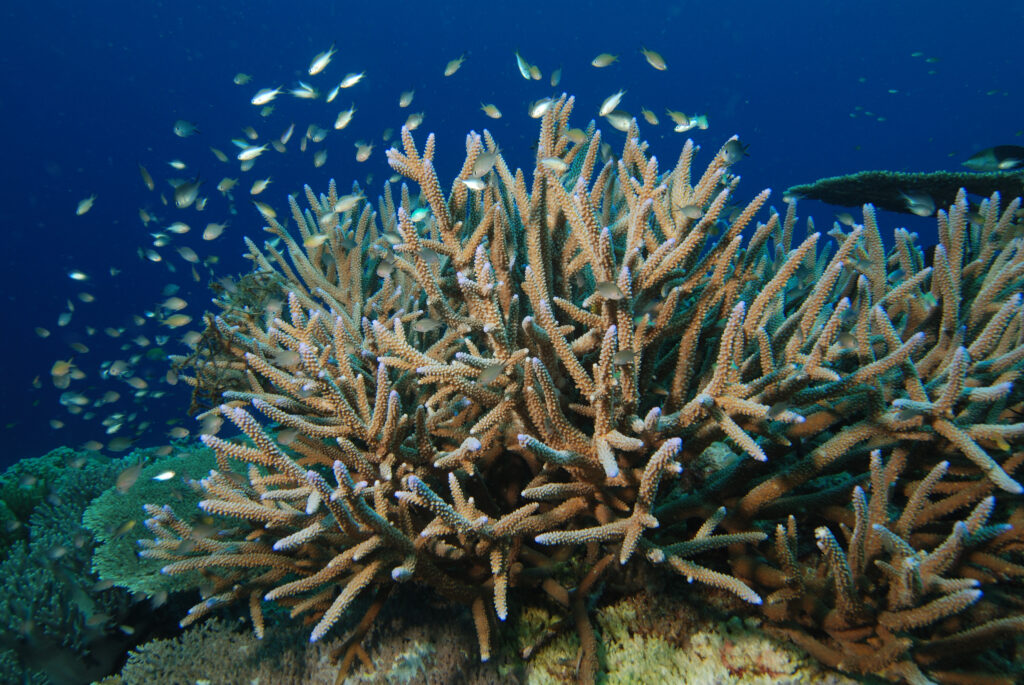Staghorn corals (Acropora cervicornis) were once among the most dominant reef-building corals in the Caribbean. However, starting in the mid-1980s, these iconic corals began a steep decline. Due to climate change and a mysterious bacterial plague known as “white band disease,” nearly 95% of these majestic corals were wiped out. In the past several years, white band disease has exploded across the Caribbean, killing a broad range of coral species and leaving a swath of destruction in its wake.
Now, groundbreaking research by OGL-affiliated Northeastern University Professor Steve Vollmer and his team provides a powerful new tool in the fight against white band disease.


Staghorn corals were once a dominant reef-building coral (left; photo credit: Albert Kok) until they were decimated by disease (right; photo credit: Steve Vollmer). New research gives scientists tools for coral restoration by predicting disease resistance among remaining corals.
In a landmark paper published this week in the journal Science, Vollmer reports that his research group sequenced the genomes of 76 staghorn coral genotypes—and discovered they could accurately predict disease resistance in both wild and nursery stocks of staghorn corals using genetic sequence markers in just 10 genes.
This discovery has great potential to accelerate coral reef restoration efforts by showing conservation managers which stocks are most resistant to the white plague, and which are most susceptible. Vollmer’s research provides hope that similar methods can be used to help restore not only this critically important coral species, but other vulnerable corals as well.
To learn more about Vollmer’s breakthrough, read the Northeastern Global News story.
Want to help support exciting new research like this? Support OGL here.
